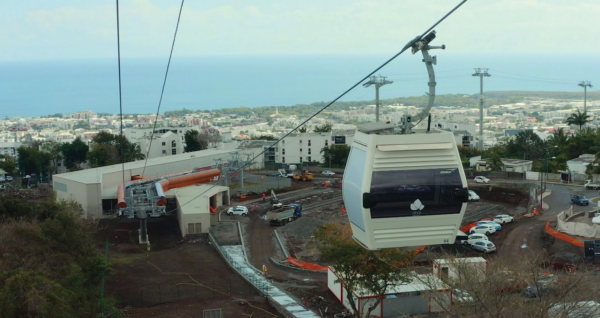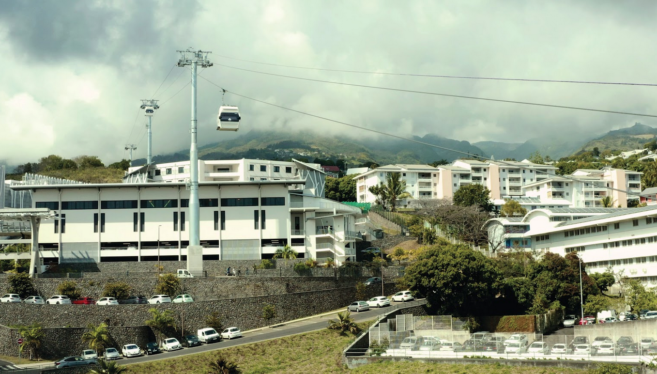
Cities, SI Urban 2/2021
La Réunion – Urban cable car form Poma to become Island´s central mode of Transport
Saint-Denis, the capital of the island in the Indian Ocean, is constructed on challenging topography. Because of the mountains and the natural corridors between them, it is difficult to move from one district to another. In addition, there is heavy traffic on the steep, narrow mountain roads, where it is not only the bus network that is stretched to the limit.
From the end of 2021, a circulating cable car should alleviate the problems of the city, which has a population of 150,000. French manufacturer POMA is currently constructing a 2.5-kilometre cable car here, with five stations. The plan is for 46 gondolas, each with ten seats, to be able to transport the expected 5,000 passengers per day.
The journey time will be twelve minutes and the transport capacity on completion will be 1,200 people per hour and direction.
The facility will therefore be of benefit not only to the around 15,000 students at the University of Réunion Island but also to the 53,000 residents in the affected districts of Moufia (population 15,000), Bois de Nèfles (population 9,000) and Chaudron (population 29,000) – as well as the passengers of the bus network.
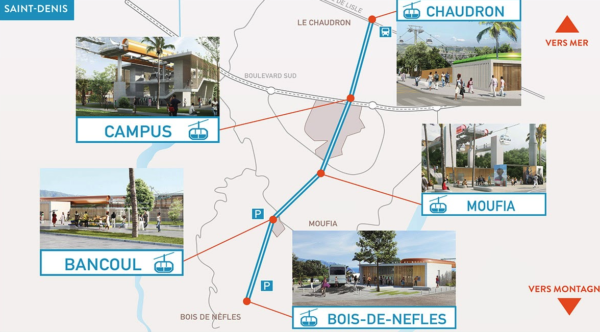
Le Réunion
The cable car will connect numerous social centres. Photo: Telepherique urbain
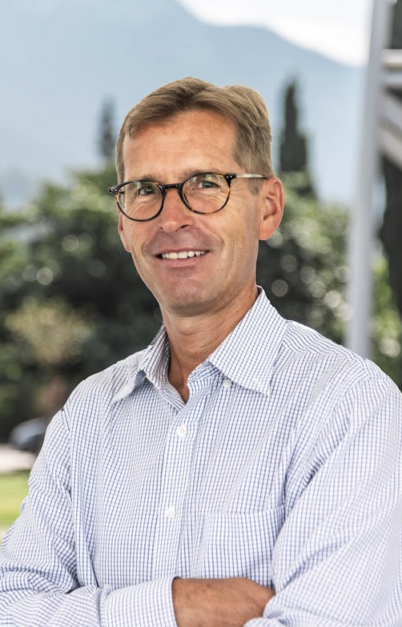
Denis Baud-Lavigne, Sales Manager POMA
Denis Baud-Lavigne, Sales Manager POMA
“The contract includes not only construction but also operation and maintenance of the cable car. Together with local partners and staff, whom we train in our UPilot training programme, we can deliver a good, comprehensive package. For us, the cable car in Saint-Denis is a reference project for a well-integrated cable car with a simple design, which will succeed as an air metro, thanks to its intermodal connections.”
CHAUDRON – BOIS DE NÈFLES CABLE CAR
CHAUDRON – BOIS DE NÈFLES CABLE CAR
|
Length |
2,5 km |
|
Travel speed |
6 m/s |
|
Journey time |
14 min. |
|
Stations |
5 |
|
Gondolas |
46 |
|
Gondolas capacity |
10 P |
|
Supports |
26 |
|
Transport capacity |
1.200 P/h/d |
|
Frequency |
36 sec. |
|
Drive |
DirectDrive |
|
Project costs |
€ 43 Mio. |
|
Manufacturer |
POMA |
Connected stations
“The cable car is designed to be intermodal. Whilst it runs vertically along the city’s natural corridor, bus routes intersect horizontally with the stations,” POMA Sales Manager Denis Baud-Lavigne explains. The stations are positioned at locations where people congregate.
As such, the cable car starts at Chaudron station, which acts as the entrance to the city centre. The next station, Campus, serves the university; the third stop, Moufia, a commercial centre and a bus station.
In turn, Bancoul station improves access to a large market; the last station, Bois de Nèfles serves an up-and-coming district. For residents, not least thanks to the station in Chaudron, the cable car represents a substantial improvement on the commute into the city centre.
All the stations are designed so that they can be extended into multifunctional buildings (shops, restaurants etc.) in the future.
The cable car in La Réunion with five stations should go into operation at the end of 2021. Photos: POMA
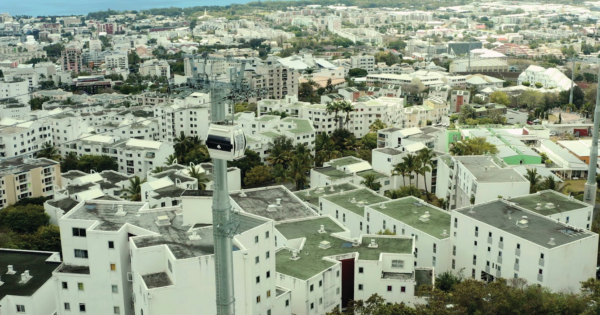
Reference project
The political process from idea to completion of the cable car was astonishingly short. The request for a cable car came in 2013 and tenders for the project were invited four years later.
Construction is being financed largely from French and European grants and operation will be supported from local taxes and ticket sales. The investment volume amounts to 43 million euros. The planning and approval process has taken three and a half years and should be concluded when the cable car goes into operation at the end of 2021.
“At POMA, we hope that the cable car in Réunion will also convince other cities of this traffic solution. With a cable car, islands such as Mayotte, Martinique, Guadeloupe and Corsica as well as cities on the mainland could improve their traffic situation quickly and in an environmentally friendly way,” Baud-Lavigne concludes.
